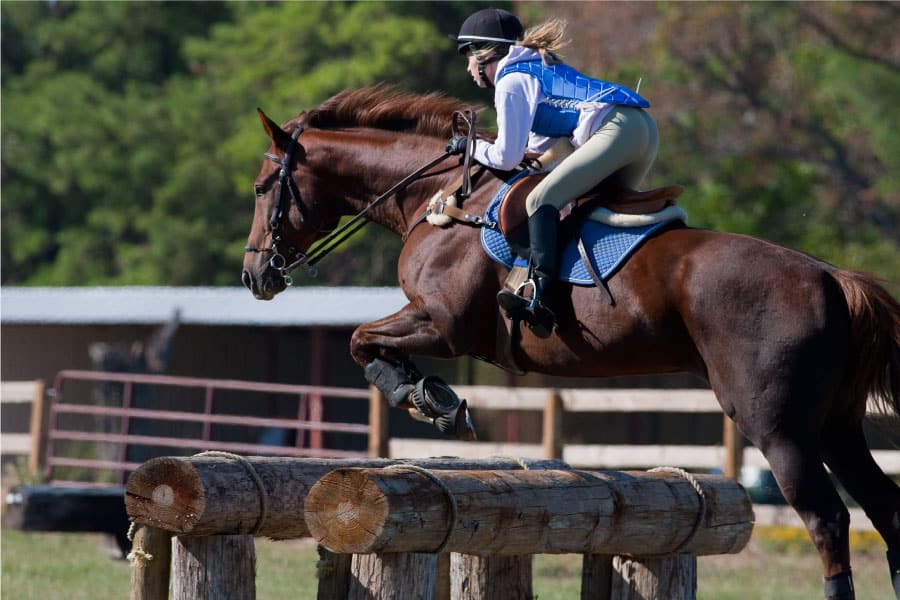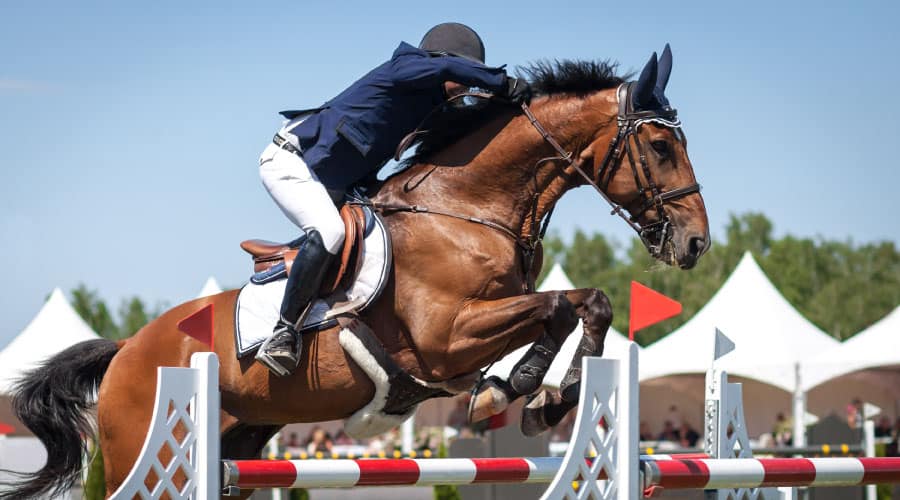
Showjumping is a dangerous sport, yet we don’t often see show jumpers wear body protectors. What is the reason for this? Body protectors are used across all equestrian disciplines but are more commonly seen in cross-country.
Body protectors are not generally seen in showjumping competitions unless used to protect an old or healing injury. There have been no studies to prove that body protectors reduce the risk of injury during show jumping. Body protectors are also not mandatory in showjumping competitions.
In this article, we will discuss whether body protectors work, benefit riders in showjumping to have as part of their gear when it comes to reducing injury, and if body protectors work to reduce the risk of injury across various other equestrian sports.
What are body protectors?
Body Protectors are protective vests or jackets that riders wear when riding. Body protectors are designed to prevent injury to the bones, joints, and internal organs by absorbing the impact when a rider falls off the horse, or when being stood on by the horse.
Body protectors are generally made from special high-tech foam, contained and divided up into smaller compartments to ensure the body protector does not restrict the rider’s movement when riding, while still providing safety. Body protectors can be worn by novice riders, amateurs, and professionals alike during leisure, training, and competition riding.
Types of body protectors
Body protectors come in many different types, styles, shapes, and sizes.
Choosing the right body protector will depend on a variety of factors such as your age, experience level, the type of riding you do, and the level of protection you would require.
Similar to helmets, a correctly fitted body protector is crucial for ensuring the body protector does its job correctly and serves its purpose in the event of a fall.
Body protectors are most widely approved by the British Equestrian Trade Organization (BETA) for quality and safety standards and offer three different certification Levels on body protectors.
Level 3 Certification – is the highest level of protection that BETA recognizes. According to BETA, level 3 body protectors should prevent minor bruising and reduce soft tissue injuries as well as prevent a reduced number of rib fractures. Level 3 body protectors are appropriate to use for cross country competitions and other general riding purposes.
Level 2 Certification – Offers much lower protection than level 3 protectors and is appropriate for use in low-risk situations.
Level 1 certification – These body protectors provide the lowest level of protection on impact. Level 1 body protectors are light and designed to meet the weight restrictions appropriate for licensed jockeys when racing.
Air vests
Air vests are not the same as body protectors and do not meet any of the (BETA) standards. They provide protection once the vest gets triggered, only after you fall, where the vest then inflates instantly before you hit the ground (in theory).
Even though riders might find air vests less restrictive and more comfortable when riding, they were originally designed to be worn in motorcycle sports and not equestrian sports.
Showjumping vs cross-country jumping

Body protectors are more commonly seen during cross-country riding and cross-country competitions. In showjumping, the poles are light and can be knocked down easily and safely, allowing the horse to get his feet out of the way without tripping and falling on the rider.
During cross-country competitions, the obstacles are solid and more dangerous for horses to jump as they can easily trip over them and fall. Body protectors are therefore used in cross-country eventing and are mandatory requirements during competitions.
Do body protectors even work?
Studies have found that there is no reduction in risk when riding with a body protector during showjumping. The results showed that there was no correlation relating to a decrease in injury when riders wore protective vests or body protectors while doing flatwork or show jumping.
The results did, however, find that wearing a body protector during cross-country showed a correlation to a decrease in reported injuries and a lower trend in the severity level of the injuries. They also showed that wearing a body protector when riding cross-country will reduce the relative risk of injury by about 56%.
This does not mean that there are no benefits to show jumpers to wear body protectors. Some of the benefits of wearing a body protector during showjumping include:
- it gives a rider confidence by making them feel safer on the horse.
- it can protect bruised or heeling ribs.
- it provides protection for novice riders and riders who tend to fall more often than the average showjumper.
- it could possibly reduce the severity of an injury.
On the other hand, show jumpers don’t usually wear body protectors because it can feel restrictive to our movements and get in the way of our riding, especially going over big jumps or when chasing the time in a jump-off.
Body protectors that are bulky can sometimes be more likely to cause a fall.
In showjumping competitions, riders are often required to wear jackets, which means you have to wear your body protector under your jacket. If you have a big bulky vest under your jacket, it can look ugly and feel uncomfortable. Showjumpers are more likely to wear lean, shock-absorbing vests than the bulky body protectors found in cross-country.
Can you wear a body protector in a competition?
Body protectors are not mandatory in show jumping competitions, aside from wearing helmets, because no significant research has been able to prove that the use of a body protector will reduce injury. Helmets are proven to reduce brain and head injuries and are strictly enforced in all show jumping competitions.
FEI Rules for wearing body protectors:
As it currently stands FEI does not state any mandatory rules for wearing body protectors in show jumping competitions.
What makes Show Jumping so dangerous?

Equestrian sports, in general, are dangerous
It has been reported that equestrian sport can be up to 20 times more dangerous than motorcycling. This number might have reduced over the years with stricter rules being enforced along with the increases in rider safety measures.
Even though show jumping is considered ONE of the most dangerous equestrian sports, the most dangerous is actually cross-country. That does not mean that show jumpers do not get seriously injured; the probability is just lower compared to cross-country.
Showjumping is a team sport
Equestrian sport is so unique in the sense that you have to control and compete with a live animal. Horses are flight animals by nature, so on top of everything, you might have to deal with an un-rehearsed reaction or spook that your horse could have during a track or right before a big jump.
Horses can think for themselves and therefore communication between a horse and the rider is not only key for success, but also important for the safety of both the horse and rider.
Not every fall will be a serious injury
Falling off is part of the game and even the most experienced and capable riders fall off sometimes. Most of the time a fall does not leave you severely injured, and you are able to get back on and continue your training. That being said, there is always a chance, especially when show jumpers are hungry and don’t know their, or their horse’s limits, that they could end up seriously injured.
Know your limits
Showjumping is seen to be more dangerous than hacking or riding on the flat, and increasing your experience and riding ability will aid in reducing the number of instances over time.
That is why it is important to know your limits and should try and not put yourself in situations where you can fall. At the end of the day if you want to do showjumping or even just ride a horse for fun, then falling off is part of the risk you have to take.
Other posts in this series to check out:
Can You Jump in a Dressage Saddle?
Why Do Show Jumpers Wear Ear Covers?
Why Do Show Jumpers Wear Spurs?
